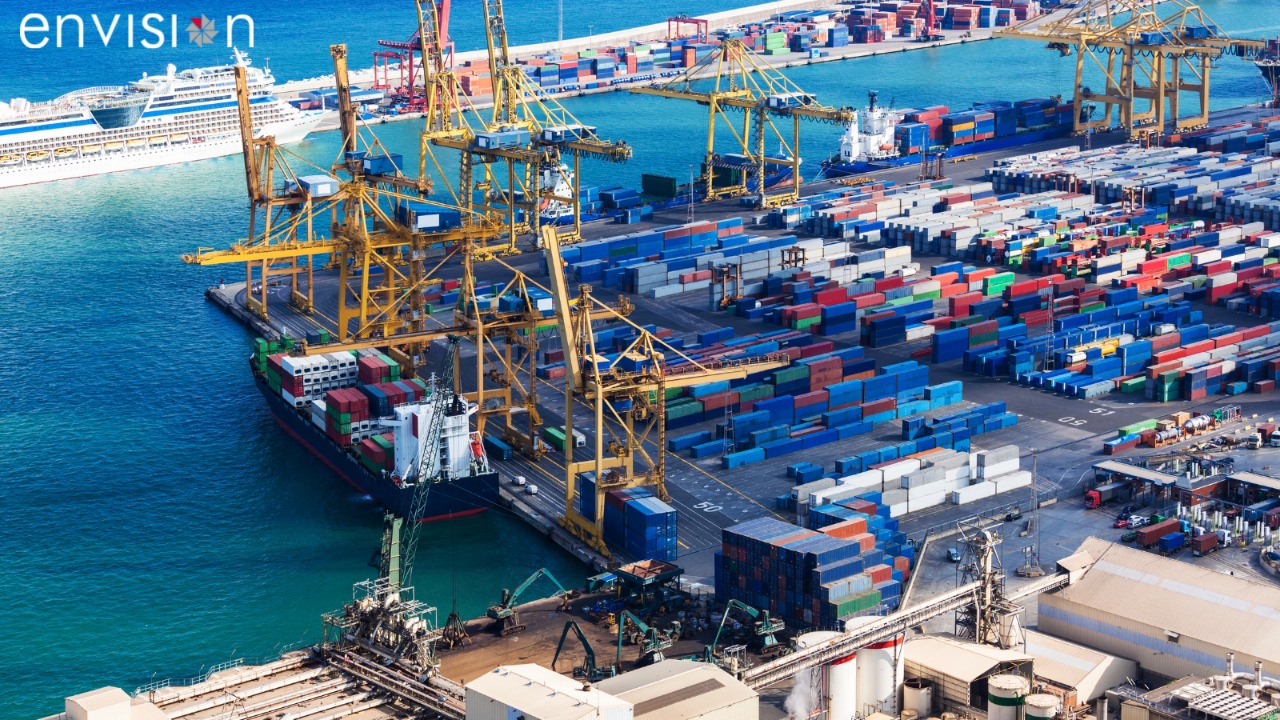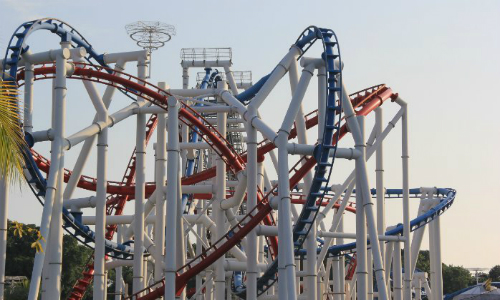Envision
Digital Twins and Smart Ports

As ports adopt digital technology more and more within their operations, another exciting innovation is making its presence felt: step forward the Digital Twin. This technology is enabling us to see what is happening now – and in the future – to our physical assets and infrastructure
There is no doubt that the digital twin is the future. Being able to predict potential dangers and create the optimum design, will enhance safety and operation greatly. With the element of the unknown significantly limited, the digital twin concept can help the shipping industry make better use of digitalization and move to a new era”. Three areas that will likely benefit from digital twins are fleet optimization, port optimization-to-end supply chain optimization and increasing key stakeholders’ situational awareness.
Digital twins can help ports execute missions, improve safety processes and allow maritime stakeholders to effectively share data. Port authorities, terminal operators and logistics specialists are already beginning to see the value of implementing a digital twin.
Some processes are so complex that you can’t risk failure by experimenting with a different approach. Other processes are so critical to operations that you dare not go offline to test an innovative method and many physical processes move with such force that you cannot interrupt them to try something new to use an old analogy, it’s tough to change the wheels on a moving train, that can be frustrating when the new design might provide dozens of valuable benefits.
As digitalization is penetrating in the shipping industry more and more, operators can benefit from its use. One aspect of this is the digital twin concept. This provides a virtual model of a physical ship, producing valuable insights from data.
What is Digital twin ?
A digital twin is a digital presentation of a vessel with associated processes and systems, based on continuous data collection and these processes or systems are presented digitally. Rather than arranging for a physical test cycle, the processes can be followed easily and quickly.
However, the quality of data defines the success of a digital twin. Namely, the use of wrong equipment, sensors and other settings can affect the quality of data.
In order to solve this, data is extracted from an actual vessel, mimicking its desired characteristics. This can ensure the better quality of data by tailoring it for the specific ship.
What is very important is the fact that a digital twin can simulate how the ship will perform without needing to test it in the real world. This concept can also allow access to every bit of information on a ship, from engine performance to full integrity, available at a glance throughout the full lifetime of the vessel.
The digital twin takes in data ranging anywhere from Internet of Things (IoT) sources including AIS information and cargo-hold from carriers to performance statistics ,maintenance status of port tractors and carriers. Stevedore can send real-time information to port operatives to provide actionable insights through mobile.
A digital twin can provide a multitude of benefits ranging from operational maintenance to predictive analysis for the twin operator.
Some may confuse a digital twin with simulation technologies, however there are key differences between the two. A digital twin can utilize the regular intake of real-time data from a port complex of cargo movement or trucking congestion, compared to traditional simulations which may not integrate real-time information, for example – increasing accuracy.
What Are the Benefits of a Digital Twin?
By combining the virtual and physical worlds within which we work, Digital Twins allow us to undertake detailed analysis of the data and use monitoring systems to deal with problems even before they occur. By using real-time data, simulation, and machine learning. Digital Twins allow businesses and organizations to maximize efficiencies, develop new opportunities, and create detailed simulations. In effect, Digital Twins are modernizing the entire process with which organizations can capture, analyze, and interpret data ensuring more effective decision-making.
The potential of the digital twin is huge because it is possible to make a number of decisions on optimization digitally rather than by means of physical tests. This potential will increase along with the development of digital tools.
Key benifits of digital twin usage in the maritime sector are :
Mirroring
One of the key capabilities of digital twin technology is , it can help in monitoring of all operations in a port complex.
An entire port can be modelled into a digital twin which will help you to predict water flows, issues with the cargo processed, etc and detect any problems related to a ship.
“Digital twin can help to improve mooring and casting off, remote controlled cranes, connected vessels, asset tracking,etc. These are only a few examples that can help the customer to minimize operational costs, improve customer satisfaction, optimize revenues, and even generate new revenue streams”.
Maintenance
Working with IoT sensors installed which can accurately measure, map, and give data sources for assets which include cranes, yard equipment and terminal facilities to provide port operatives with advanced knowledge of upcoming maintenance needs.
These sensors can accurately measure the assets and send real-time reports on crane cable health. For example , the port’s maintenance team(engineers) can detect the faults before they occur.
Additionally, digital twinsprovide engineers a safer way to monitor equipment as they no longer have to manually assess the health of equipment.
Monitoring
Digital twins and digitalization will be pivotal in improving efficiencies , environmental emissions monitoring as maritime stakeholders look to reduce their carbon footprint.
Through visualized digital twin platforms a terminal operator can monitor end-to-end cargo tracking ,fleet management services and can supervise the workforce in the field.
The result is more accurate and pinpointed loading and unloading times, for example, creating faster truck and ship turnaround times.
Improved accuracy with real-time information could also lead to a potential reduction in failures ocntainer movements by cranes and operatives – reducing energy usage and a port’s overall carbon footprint.
Energy efficient solutions with sensors that control power, gas and water consumption are also gaining more relevance in order to guarantee the sustainability of the port.
Predictive analysis
Moving forward, a port can be provided with significant foresight and planning knowledge through predictive analysis.
Ports can recreate virtual scenarios with different environmental configurations, different fleets and different levels of autonomy.
The use of AI Drivers’ digital twin is applicable when there is a need to integrate autonomous technologies, for example, in a terminal without disrupting the operations.
“The digital twin creates awareness of autonomously operated vehicles, showcases different sophisticated use cases which is difficult or not possible to reconstruct in the real-world environment due to the risk,
Digital Twins and Smart Ports
The use of Digital Twin systems is one characteristic of a Smart Port.
A Smart Port is green, digital and more connected to logistics, industrial environments and sustainable development resources. They are automated ports using new technologies while caring more for the marine environment.
Smart Port technologies include Big Data, AI, Internet of Things (IoT), blockchain technology, and 5G connection.
Digital Twin technology is helping ports to achieve business efficiencies – and protect our maritime eco-system.
Digital Twins are an important tool for improving processes and business performance in ports and other industries. However, they can also assist the maritime sector to gain long-term situational awareness by understanding the complex ecosystem surrounding us.
Talk to us today to know how our solutions can accelerate your digital transformation
Let's Talk
































